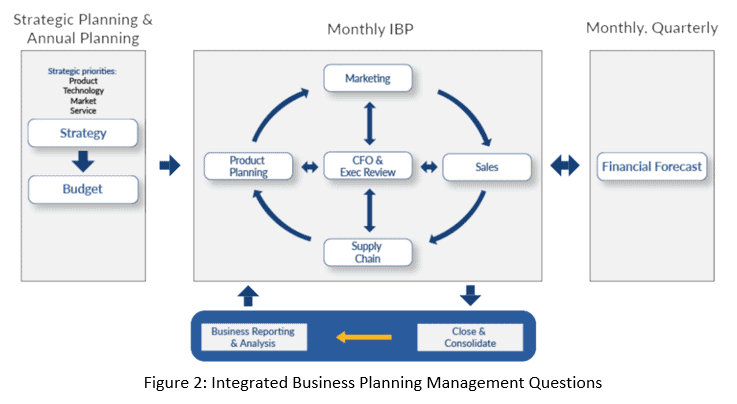A rolling forecast is a management tool that enables organizations to continuously plan (i.e., forecast) over a set time horizon.[1] Why does creating a rolling forecast matter? When you’re a finance leader and business partner, it matters because it’s your responsibility to keep a pulse on all aspects of your organization, including financial and operational performance. And while you’ll likely never get the credit you deserve for doing so, it’s also your responsibility to implement agile budgeting, planning & forecasting processes that enable collaboration and provide support for effective business decisions between the finance team, sales, operations, HR, and other functions.
Now that we have answered “what is a rolling forecast,” what kind of organizations can take advantage of rolling forecast benefits? Perhaps the better question is, who can’t? Because if your organization interacts regularly with consumers, suppliers, or regional operations, there’s simply no escape. From what? From the roller coaster ride and volatility of global markets these days. And to make matters worse, this roller coaster ride feels like the “new norm” of what to expect.
Daily, we have fears of the next recession. And let’s not forget the impact of the ongoing US-China trade wars, uncertainty surrounding inflation, as well as the impact on oil and gas prices. In other words, it’s constant chaos. This is a challenging environment to plan against.
Not to mention, the fourth quarter is approaching fast. And that means that finance and business leaders are finalizing fourth-quarter forecasts and setting goals and plans for 2020. But with all this noise externally, how will organizations dial- in their final plans? Through brute force! With hours and hours of developing revenue and EBITDA targets. And for each scenario, there’s more hard work to align goals from your financial model with what are often fragmented sales, workforce, production, and capital planning processes. The cycle seems to never end.
How do you keep your sanity amidst all of that? Rolling forecasts, of course! So let’s get rolling with some considerations for implementing this technique.
Ditch Your Static Budgets
While annual operating plans (AOPs) are the norm for most organizations to level-set expectations or anchor compensation targets, such plans do very little to help with resource allocations in a dynamic business. In fact, in today’s market, I can promise you that any AOP is wrong within seconds of the final submission.
Working in a fast-paced, sophisticated organization isn’t easy. Especially if you want to respond quickly to new opportunities and risks. So many factors can change in each and every forecast period – and change quickly. What factors? Customer wins or losses. External factors like changing oil prices or interest rates. Commodity pricing. Staffing needs or inventory levels. It’s an endless list.
A rolling forecast (see figure 1) is designed to allow management to continuously plan the business. Here are a few stats from The Dresner Advisory 2019 Wisdom of Crowds EPM Market Study, which details how frequent organizations run their forecasts:
- 62% of organizations are using a rolling forecast

- 14% use a rolling forecast instead of an annual plan
- 35% complete rolling forecast monthly
- 21% complete a rolling forecast quarterly
Best practice is to ensure rolling forecasts can extend (e.g., roll) beyond the current calendar or fiscal year. The forecasts can extend anywhere from 12 months at a time to 18 months or even up to 24 months.
The good news is that there’s more than one way to do it. What’s more important is to actually start the process.
Why? Because it pushes the organization to think differently. To think long term. And when done consistently, a rolling forecast process can eventually not only eliminate the need for an annual budget but also positively affect the DNA of an organization.
Create Focus on Business Drivers and KPIs
It’s also important to focus on what the organization actually plans for. Did you know that 50% of finance leaders report that they get little value out of their financial planning processes[2]? Why do you think this is?
It’s because static financial plans completed in isolation add little value to managers and don’t drive the  business. So what does impact the business? It’s all about the underlying business drivers. Customers and market demand. Global competition. Changes in commodity prices. And sales, marketing, and supply chain plans. So If your budgeting, planning & forecasting processes don’t yet focus on business drivers or include your business partners, it may be time to also consider integrated business planning (see figure 2).
business. So what does impact the business? It’s all about the underlying business drivers. Customers and market demand. Global competition. Changes in commodity prices. And sales, marketing, and supply chain plans. So If your budgeting, planning & forecasting processes don’t yet focus on business drivers or include your business partners, it may be time to also consider integrated business planning (see figure 2).
Remember, budgeting, planning & forecasting is NOT only about finance. It’s not only about revenues or expenses. It’s also about unleashing value across the organization.
It’s also about driving measurable business performance. And to do that, the organization must focus on what actually impacts the business. Part of your job as a modern finance leader is to create processes to help translate how changes in the business impact the P&L, balance sheet, and cash flow.
A driver-based rolling forecast process ensures agility, collaboration, alignment, and a focus on what drives the organization.
Align Detailed Business Plans with Financial Results
While we’re focused on the merits of a rolling forecast process, let’s not forget that organizations have to close the books and report monthly and quarterly financial results. And we know what happens if the latest results don’t come in as planned – right?
Well, if your organization still relies on a series of spreadsheets, legacy corporate performance management (CPM 1.0), or point solutions for planning – buckle up. Because your wild ride to explain how detailed operations plans align to the financials is just beginning. Sound familiar?
I’ll bet it does. Why? Because it’s you and your team whose left maintaining and reconciling data between systems. And it’s your team who is building reports to join actual, budget, and forecast data from different applications. And if there’s been any change to your organization or product hierarchy during that time, watch out. Because your roller coaster ride may never end. And by the way. All that work is required just to do the basics.
But what if there’s a better way to seamlessly close the books, report, plan and manage a rolling forecast? And no, we’re not talking connected planning here, folks. We’re talking about unified planning with a platform approach to CPM with a single application that delivers multiple solutions (CPM 2.0).
And with over 900 successful customers around the globe, OneStream’s modern CPM platform is quickly becoming the proven alternative to legacy solutions, Excel spreadsheets, and inferior cloud-based planning tools.
OneStream Unleashes the Rolling Forecast
OneStream enables finance and business leaders like you to continuously extend the platform to meet the changing needs of the business. And to integrate all of your various planning processes, OneStream’s MarketPlace extends the value of your investment with purpose-built solutions to dynamically unify sales planning, people planning, and capital planning with financial plans.
So yes – it’s possible to develop detailed, driver-based rolling forecasts at the customer level, project level, or person level. To do this in real-time with your business partners by your side. To dynamically understand the impact on the P&L, balance sheet, and cash flow. And it’s even possible to do it for multiple scenarios, in real-time and without creating a series of offline spreadsheets or moving data between “connected” modules or cubes.
Ready to Roll?
It’s no secret that speed is a key differentiator for effective CFOs. Why, because the expectations for CFOs are expanding, and the insights they deliver are now central to executing key strategies. CFOs must keep up with today’s pace of change, and use large volumes of data, coming in at a high velocity to advise business partners to make decisions that lead the organization to prosperity.
Want a great overview and real-life examples of how modern CFOs are increasing their speed and increasing their organizational value? Watch “Stay Ahead of the Game – Maximizing Intelligent Finance with Predictive Rolling Forecasting,” where Aaron Shifrin, Managing Director at Accenture, discusses how rolling forecasts and integrated planning are operationalized and enhanced with ML and AI.
[1] https://www.wallstreetprep.com/knowledge/rolling-forecast-best-practices-guide-fpa-professionals/
[2] Ventana Research: “Let’s Talk About the Business Not Just the Budget”
Get Started With a Personal Demo



